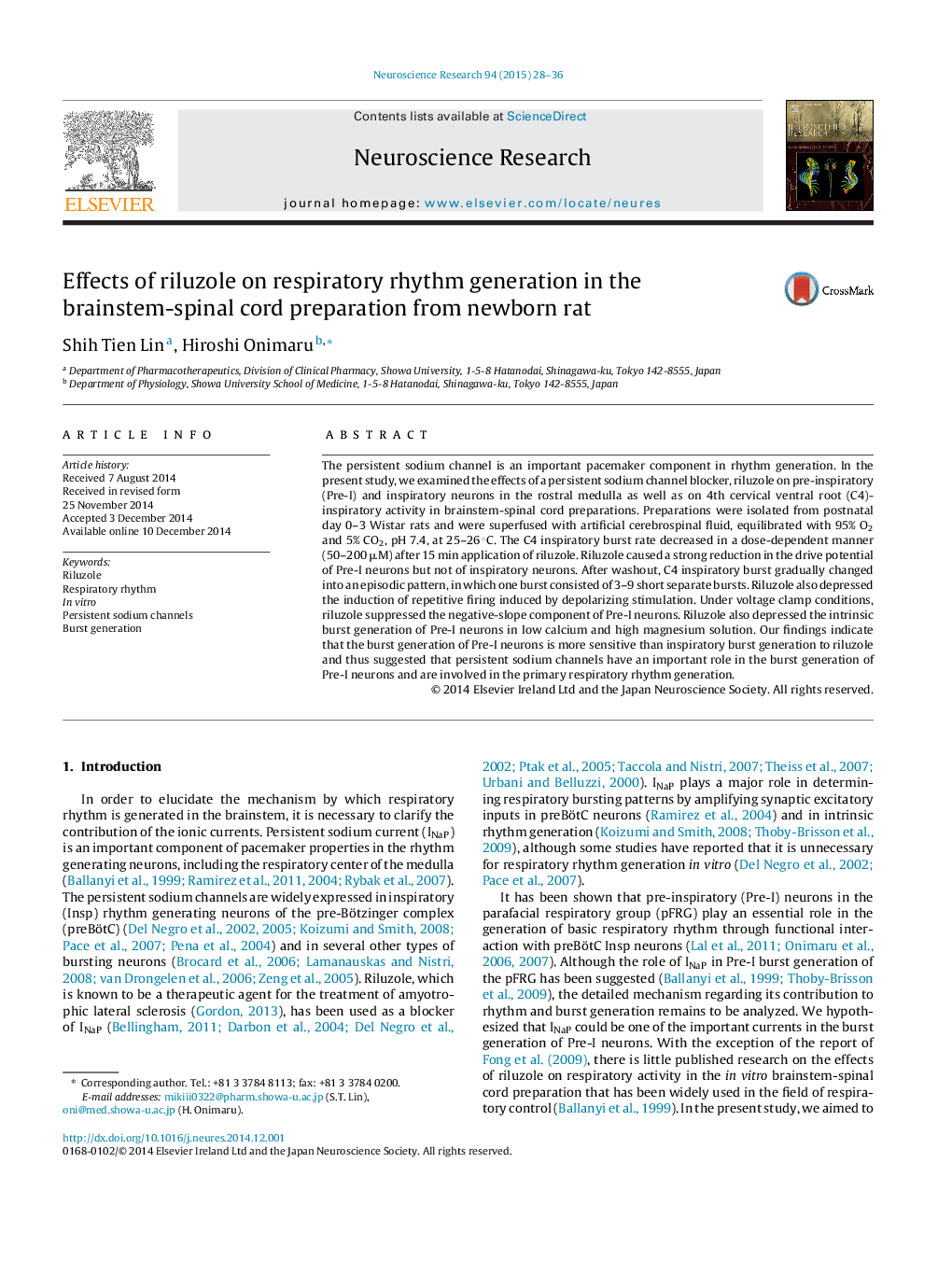| Article ID | Journal | Published Year | Pages | File Type |
|---|---|---|---|---|
| 4351361 | Neuroscience Research | 2015 | 9 Pages |
•Riluzole is known as a persistent sodium channel blocker.•We examined the effects of riluzole on respiratory burst activity in newborn rat medulla.•Riluzole dose-dependently depressed C4 inspiratory rhythm in vitro.•Riluzole caused a strong reduction in the drive potential of preinspiratory neurons.•Persistent sodium channels are involved in respiratory rhythm generation.
The persistent sodium channel is an important pacemaker component in rhythm generation. In the present study, we examined the effects of a persistent sodium channel blocker, riluzole on pre-inspiratory (Pre-I) and inspiratory neurons in the rostral medulla as well as on 4th cervical ventral root (C4)-inspiratory activity in brainstem-spinal cord preparations. Preparations were isolated from postnatal day 0–3 Wistar rats and were superfused with artificial cerebrospinal fluid, equilibrated with 95% O2 and 5% CO2, pH 7.4, at 25–26 °C. The C4 inspiratory burst rate decreased in a dose-dependent manner (50–200 μM) after 15 min application of riluzole. Riluzole caused a strong reduction in the drive potential of Pre-I neurons but not of inspiratory neurons. After washout, C4 inspiratory burst gradually changed into an episodic pattern, in which one burst consisted of 3–9 short separate bursts. Riluzole also depressed the induction of repetitive firing induced by depolarizing stimulation. Under voltage clamp conditions, riluzole suppressed the negative-slope component of Pre-I neurons. Riluzole also depressed the intrinsic burst generation of Pre-I neurons in low calcium and high magnesium solution. Our findings indicate that the burst generation of Pre-I neurons is more sensitive than inspiratory burst generation to riluzole and thus suggested that persistent sodium channels have an important role in the burst generation of Pre-I neurons and are involved in the primary respiratory rhythm generation.
